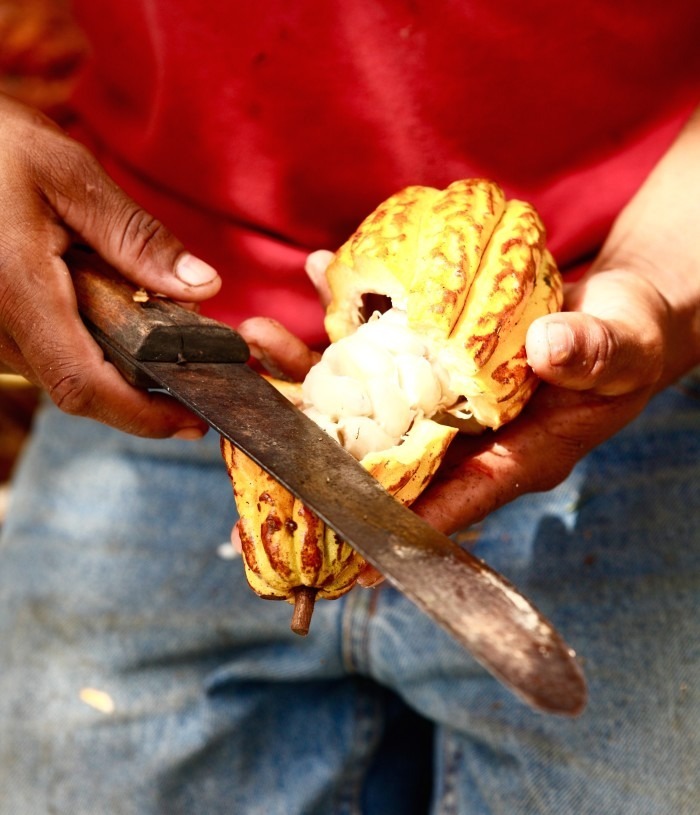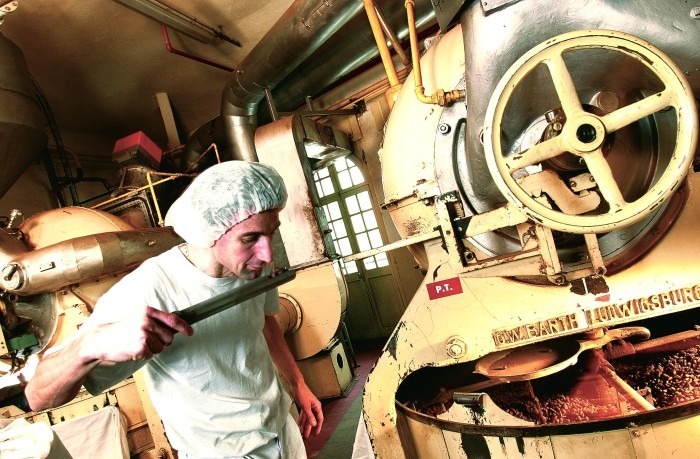How Well Do You Really Know Chocolate?
It's one of the world's favorite foods, and you've likely found yourself licking it off your fingers, but how well do you really know chocolate? Even experts are still getting to know the stuff: Research on everything from cacao bean varieties to the various ways of processing them is ongoing. Plus, with all the talk of cocoa shortages and soaring prices, the sustainability of the sweet treat is being called into question. So even if you identify as a chocoholic, chances are you'd be surprised to hear what's really behind your box of bonbons.
It all starts with the cacao tree. Officially Theobroma cacao, its name derives from the ancient Greek for "food of the gods." It grows in lush, humid tropics, almost exclusively within 20 degrees of the equator. Much of the world's chocolate comes from cacao trees in West Africa, with Indonesia and South America following close behind. Researchers aren't quite sure where cacao originated — it could be the Amazon basin of Brazil or Venezuela's Orinoco Valley. Or it could be from some long-lost land beneath the sea. Given the thick terrain of the rainforests it's home to, getting to the tree is the hard part.
"Sure, I've had to kill snakes and jump into rivers on [chocolate-sourcing] trips," says Benjamin Figarède, a chocolate sourcer for Valrhona, which provides chocolate to high-end pastry chefs like Dominique Ansel and Christina Tosi. "In Peru, for example, I went to taste the cacao of a remote tribe called the Awajún [known for their elaborate feathered headdresses], up near the Ecuadorian border. You have to take a pirogue [a narrow canoe fashioned from a single tree trunk] to get there. But it's not always like that."

More commonly, Figarède spends his time checking out cacao farms and observing how the beans get processed. The pod-shaped fruit of the cacao tree can be nearly a foot long. Its seeds, about 50 to a pod, are fermented and dried, then roasted and ground into "cocoa liquor." This paste is what gets mixed with sugar, vanilla and milk powder to make chocolate. The various ways the beans are processed has a major impact on the resulting chocolate. Fermentation is usually carried out in large wooden boxes using naturally occurring yeasts; drying might be done out in the sun or in drying sheds.
The beans are strongly linked to the environment in which they grow. In wine, this is known as terroir. Whether chocolate pairs with wine is debatable, but the two certainly have a lot in common. They are both, fundamentally, agricultural products that reflect the soil, climate and altitude where their raw materials grow. Single-origin and single-estate chocolate are especially driven by terroir.
Another thing chocolate has in common with wine is varietals. Yet the three long-established classifications — Criollo (mostly found in Central America and representing only 1 percent of the world's cacao), Forastero (the most common variety, grown in South America and West Africa) and Trinitario (a hybrid of the two) — have recently been challenged. Researchers believe more genetic families of the cacao tree exist, with numerous sub-varieties. A few years ago, a rare white cacao bean was discovered in the Piura region of Peru. It appears to be a hybrid variety that hails from the Amazonian Valley, but the original was not white. The way the bean looks and tastes in Piura is unique to its terroir.

Figarède makes up to 25 trips annually — sometimes perilous, always adventurous — to cacao farms worldwide, from the Ivory Coast to Brazil. When he's on the hunt for a new farm, sustainability is key. Some 90 percent of the world's chocolate comes from small farms. Like specialty coffee, fine chocolate is a potentially life-changing source of income for remote farming communities.
Diligent sourcers like Figarède ensure that co-ops, which are common and can comprise thousands of farmers, are run democratically and all members (not just those in enviable administrative positions) treated fairly. On privately owned farms, workers must be paid a decent living wage to do business with Valrhona. Like other proponents of the bean-to-bar movement, which values direct trade with cacao farmers, the company pays fixed prices for beans so that growers are not at the mercy of the cocoa market's fluctuating prices.
"If we find a chocolate we love, we want to be able to offer it for years to come," he says. And we, with our insatiable appetite for this dark indulgence, want to eat it at least as long.

